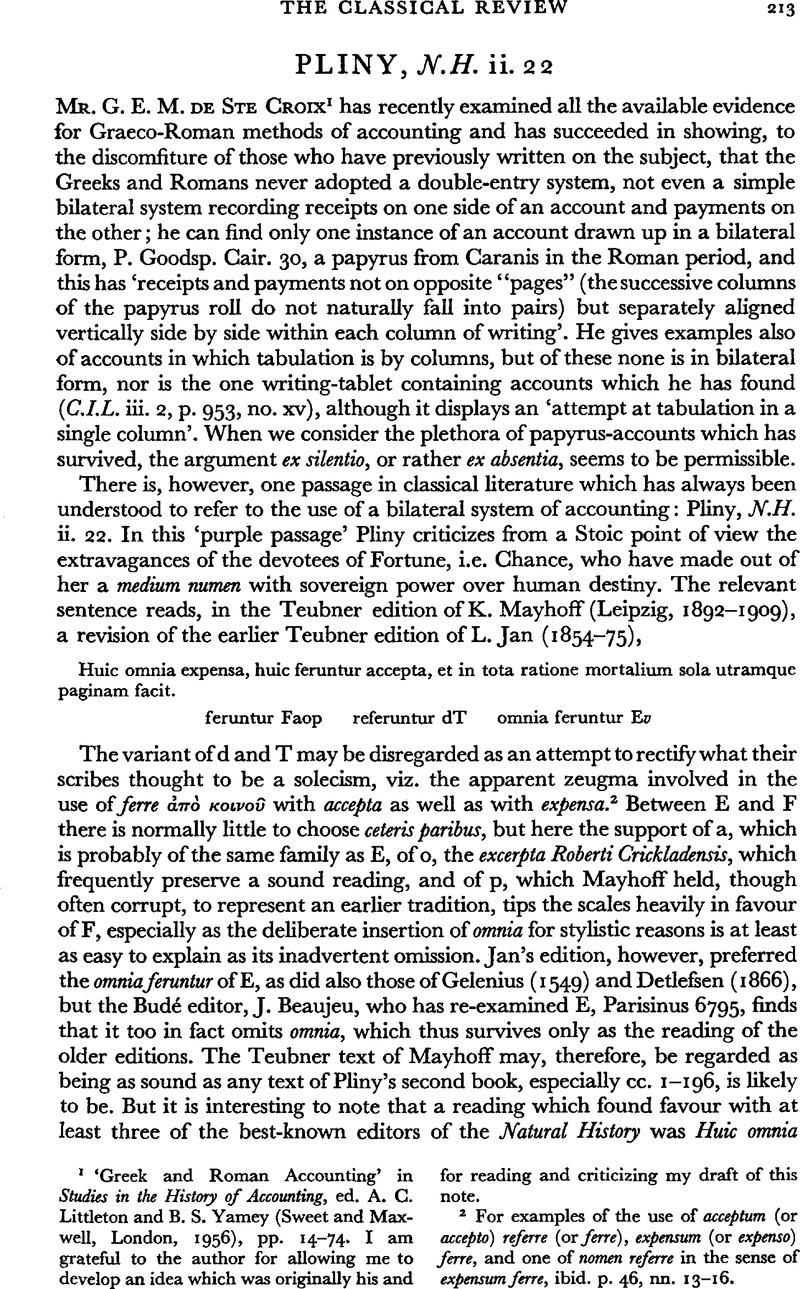No CrossRef data available.
Article contents
Pliny, N.H. ii. 22
Published online by Cambridge University Press: 13 February 2009
Abstract

Information
- Type
- Review Article
- Information
- Copyright
- Copyright © The Classical Association 1958
References
page 213 note 1 ‘Greek and Roman Accounting’ in Studies in the History of Accounting, ed. Littleton, A. C. and Yamey, B. S. (Sweet and Maxwell, London, 1956), pp. 14–74Google Scholar. I am grateful to the author for allowing me to develop an idea which was originally his and for reading and criticizing my draft of this note.
page 213 note 2 For examples of the use of acceptum (or accepto) referre (or ferre), expensum (or expenso) ferre, and one of nomen referre in the sense expensum ferre, ibid. p. 46, nn. 13–16.
page 214 note 1 Urlichs, L., Chrestomathia Pliniana (Berlin, 1857)Google Scholar, was apparently thinking of recto and verso of a sheet of papyrus when he wrote, ad loc.: ‘In den Rechnungsbüchern der Römer stand die Ausgabe auf der Vordern-, die Einnahme auf der Rückseite verzeichnet’, a practice of which there is no evidence at all.
page 214 note 2 Campbell, D. J., C. Plini Secundi Naturalis Historiae Liber Secundus (Aberdeene, 1936), p. 17Google Scholar, cites five examples of this usage from Book ii, not including mortalium as a possibility.
page 215 note 1 Cf. Nep. Epam. 3. 6 earn summam cum fecerat.

